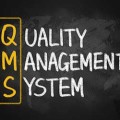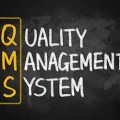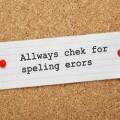
Everybody has stories of quality problems and the anxiety they cause.
The assembly line is down, or a customer complained about the product, or the report missed an important element, in that moment the only thing that matters is that someone didn’t achieve the quality expectations.
Believe it or not, the presence of defective products is not always a bad thing. The number of defective products might well be within acceptable limits, but this means that defining and managing quality is a core component of a project manager’s job.
Project quality is defined as the degree to which the project deliverables meet the requirements. A Quality Management Plan is the component of the Project Management Plan which ensures that the requirements are met.
Its purpose is to ensure the quality of the project’s deliverables meet the acceptable standards as well as stakeholder’s expectations. It does this by specifying the quality standards the deliverables must meet and the actions that will be taken to get there. This ensures the maximum quality of the deliverables and the minimizes the cost of poor quality.
A good quality management plan contains the following 4 parts.
- Quality Standards
- Quality Assurance
- Quality Control
- Quality Inspection
Quality Standards
This section identifies the quality standards and specifications that will govern the project. There are many places to obtain quality standards, and they can generally be categorized as follows:
- Internal company standards. There is a always a minimum standard of quality that is expected, even if it is simply the level of quality that clients, customers, and other stakeholders are used to receiving. This is worth writing down like any other quality standard, even if it is vague or difficult to define, so that the project team can strive to meet it.
- Regulatory requirements. Many projects require certain deliverables and a quality level that ensures passage through regulatory hurdles. If there is a question of whether or not it will pass regulatory scrutiny, this is something that should be communicated with stakeholders.
- Industry Standard Specifications. Almost every industry has standard off-the-shelf specifications which can used to measure quality.
- The American Society for Testing and Materials (ASTM) for construction.
- Institute of Electrical and Electronics Engineers (IEEE) for electrical work.
- Society of Automotive Engineers (SAE) for the automotive industry.
- Country-Specific Specification Bodies. In almost every country in the world, a specification body publishes quality specifications for a wide variety of items:
- United States: American National Standards Association (ANSI).
- India: Bureau of Indian Standards (BIS).
- China: Standardization Administration of China (SAC).
- Quality Methodologies. Six Sigma, Total Quality Management, Kaizen, Lean Manufacturing, and the like can produce excellent quality criteria. Implementing a quality methodology rigorously can result in very high productivity gains and high quality products.
- Legal standard of care to the public (or simply, public expectations). Legal standard of care refers to the liability that a person incurs to the general public without having a contract with any one person. For example, an engineer has a legal standard of care to build bridges that do not fail, and can be held liable for damages to the person who is injured because of his/her actions, even if there is no written contract between the engineer and the injured person. However, if the bridge does not actually fail but is perceived to be failing (cracking, loss of concrete, etc.), this clearly would render the project a failure due to public expectations. Both of these problems should be addressed in the Quality Management Plan to make sure they do not happen.
- External standards. Often the project sponsor or “owner” organization has standards that apply to all of their projects, such as safety standards for an oil company, or tolerance limits for a manufacturing company.
- Other stakeholder standards, like utilities, adjacent landowners, and other affected organizations.
All products and services have quality standards associated with them. Somebody is expecting the deliverables and is therefore by definition expecting a certain quality level associated with them. As a minimum, this level of quality should be defined and written down as a specification to the project team in the form of a Quality Standards section of the Quality Management Plan.
Quality Assurance
During project execution, the quality of the deliverables is measured against the standards identified within the Quality Management Plan during the project planning phase.
Quality Assurance, often called simply QA, is the process of auditing the the quality requirements and the results from quality control measurements to ensure that appropriate quality standards and operational definitions are used. Not to be confused with Quality Control (QC), it involves the analysis and scrutiny of the processes that are being used. For example, on a manufacturing line for vehicles, Quality Assurance might inspect the robots that are doing the work, analyzing how often they fail and how the production uptime can be maximimed. Quality Control, on the other hand, is measuring the number of vehicles coming out of the assembly line that are deficient (product vs. process).
Quality Assurance asks the following questions:
- How will quality be measured?
- Who will measure it?
- What will be measured? (i.e. How many units? Which types? Which processes?)
- When (how often) will it be measured?
- What is the criteria for rejection?
Quality assurance usually involves the performance of quality audits, a structured, independent process to determine if project activities comply with policies, processes, and procedures. They can be carried out at random or in a predefined, systematic fashion. They target various aspects of the production system to determine if improvements are warranted, and recommend the necessary actions.
Quality audits perform the following functions:
- Identify non-conformity, gaps, and shortcomings.
- Compare to other, similar processes within the organization (or externally if applicable).
- Highlight lessons learned from previous projects.
- Recommend remedial actions to improve product quality and raise productivity.
The project’s reaction to these quality audits should serve to reduce the cost of quality and increase the acceptance of the product by customers, project sponsors, and stakeholders.
Quality Control
The purpose of quality control is twofold:
- Identify the causes of poor product quality.
- Validating that the project deliverables meet the requirements specified within the Quality Management Plan.
Quality control involves the measurement of defects coming out of the production cycle. It analyzes the number and type of defects being produced by the project to determine what is going wrong and how badly. Often, a few defects are acceptable.
The defects can be sampled and rated on a scale:
- Attribute sampling ranks the products on a pass/fail basis. It either conforms or does not conform to the specifications identified within the Quality Management Plan.
- Variables sampling rates the products on a continuous scale, such as 1-10 or A-E. The quality assurance process can then decide how much variation is considered a deficiency and what remedial actions are taken.
Quality control often must rate a product on tolerances and control limits.
- Tolerances are a specified range of acceptable results. For example, the vehicle’s door hinges must be cut to 1/8 inch of the design value or the chassis will be rejected.
- Control limits identify the boundaries of common variation in a statistically stable process. For example, the vehicle’s seats might not always fit really well but can be manually adjusted without slowing the assembly line.
Sometimes the defects might not be acceptable but can be inspected out of the system. That is,
- Prevention is keeping errors out of the process.
- Inspection keeps errors out of the hands of the customer. The defective products are removed prior to delivery to the customer/client.
Quality Inspection
Quality control almost always includes some form of inspection. The Quality Management Plan should identify the following three things:
- Type of Inspection: The item that will be inspected and the inspection equipment that will be used. Also, the degree or level of inspection.
- Frequency: The time between inspections and spacing relative to unique events (such as replacement of machine supplies, etc.)?
- Criteria: The pass/fail criteria, or sliding scale (1-10) which will be reported.
Ideally an inspection form is developed or taken from a relevant source. It is important to be comprehensive and include all items necessary for a complete inspection, or else you could find yourself without the data you really want.






